Related Research Articles
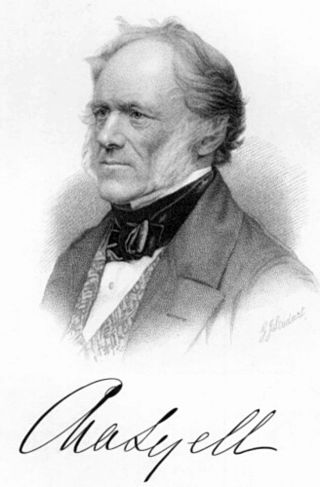
Sir Charles Lyell, 1st Baronet, was a Scottish geologist who demonstrated the power of known natural causes in explaining the earth's history. He is best known today for his association with Charles Darwin and as the author of Principles of Geology (1830–33), which presented to a wide public audience the idea that the earth was shaped by the same natural processes still in operation today, operating at similar intensities. The philosopher William Whewell dubbed this gradualistic view "uniformitarianism" and contrasted it with catastrophism, which had been championed by Georges Cuvier and was better accepted in Europe. The combination of evidence and eloquence in Principles convinced a wide range of readers of the significance of "deep time" for understanding the earth and environment.

Jean Louis Rodolphe Agassiz FRS (For) FRSE was a Swiss-born American biologist and geologist who is recognized as a scholar of Earth's natural history.
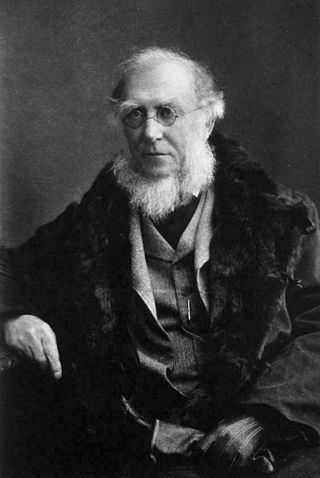
Sir Joseph Dalton Hooker was a British botanist and explorer in the 19th century. He was a founder of geographical botany and Charles Darwin's closest friend. For 20 years he served as director of the Royal Botanical Gardens, Kew, succeeding his father, William Jackson Hooker, and was awarded the highest honours of British science.
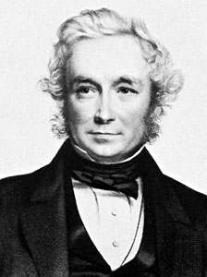
John Stevens Henslow was an English Anglican priest, botanist and geologist. He is best remembered as friend and mentor to his pupil Charles Darwin.
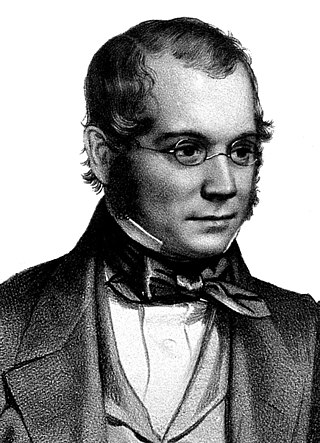
David Thomas Ansted FRS was an English professor of geology and author of numerous books on geology. His role as a teacher at Addiscombe Military Seminary, where future East India Company army officers were trained, had an influence on the study of geology in the colonies.
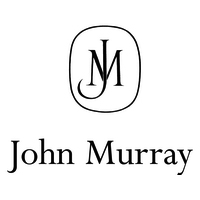
John Murray is a Scottish publisher, known for the authors it has published in its long history including Jane Austen, Sir Arthur Conan Doyle, Lord Byron, Charles Lyell, Johann Wolfgang von Goethe, Herman Melville, Edward Whymper, Thomas Malthus, David Ricardo, and Charles Darwin. Since 2004, it has been owned by conglomerate Lagardère under the Hachette UK brand.
The immediate reactions, from November 1859 to April 1861, to On the Origin of Species, the book in which Charles Darwin described evolution by natural selection, included international debate, though the heat of controversy was less than that over earlier works such as Vestiges of Creation. Darwin monitored the debate closely, cheering on Thomas Henry Huxley's battles with Richard Owen to remove clerical domination of the scientific establishment. While Darwin's illness kept him away from the public debates, he read eagerly about them and mustered support through correspondence.

James Nicol FRSE FGS was a Scottish geologist.

The geology of Scotland is unusually varied for a country of its size, with a large number of different geological features. There are three main geographical sub-divisions: the Highlands and Islands is a diverse area which lies to the north and west of the Highland Boundary Fault; the Central Lowlands is a rift valley mainly comprising Palaeozoic formations; and the Southern Uplands, which lie south of the Southern Uplands Fault, are largely composed of Silurian deposits.

The Herbert Mountains are a conspicuous group of rock summits on the east side of Gordon Glacier in the Shackleton Range of Antarctica. They were first mapped in 1957 by the Commonwealth Trans-Antarctic Expedition and named for Sir Edwin S. Herbert, Chairman of the Finance Committee and a Member of the Committee of Management of the expedition, 1955–58.

Glen Roy in the Lochaber area of the Highlands of Scotland is a glen noted for the geological phenomenon of three loch terraces known as the Parallel Roads of Glen Roy. The terraces formed along the shorelines of an ancient ice-dammed loch that existed during a brief period of climatic deterioration, during a much longer period of deglaciation, subsequent to the last main ice age. From a distance they resemble man-made roads running along the side of the glen, hence the name. Much of the glen is designated as a national nature reserve.

The second voyage of HMS Beagle, from 27 December 1831 to 2 October 1836, was the second survey expedition of HMS Beagle, made under her newest commander, Robert FitzRoy. FitzRoy had thought of the advantages of having someone onboard who could investigate geology, and sought a naturalist to accompany them as a supernumerary. At the age of 22, the graduate Charles Darwin hoped to see the tropics before becoming a parson, and accepted the opportunity. He was greatly influenced by reading Charles Lyell's Principles of Geology during the voyage. By the end of the expedition, Darwin had made his name as a geologist and fossil collector, and the publication of his journal gave him wide renown as a writer.
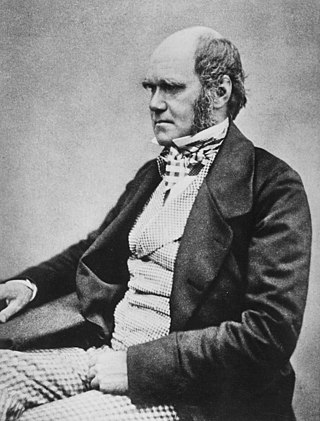
Charles Robert Darwin was an English naturalist, geologist and biologist, widely known for his contributions to evolutionary biology. His proposition that all species of life have descended from a common ancestor is now generally accepted and considered a fundamental concept in science. In a joint publication with Alfred Russel Wallace, he introduced his scientific theory that this branching pattern of evolution resulted from a process he called natural selection, in which the struggle for existence has a similar effect to the artificial selection involved in selective breeding. Darwin has been described as one of the most influential figures in human history and was honoured by burial in Westminster Abbey.
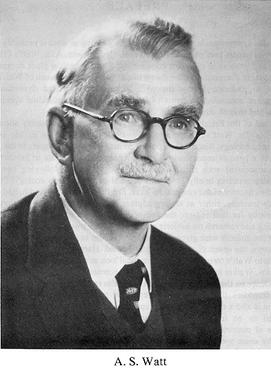
Alexander Stuart Watt FRS(21 June 1892 – 2 March 1985) was a Scottish botanist and plant ecologist.

The Structure and Distribution of Coral Reefs, Being the first part of the geology of the voyage of the Beagle, under the command of Capt. Fitzroy, R.N. during the years 1832 to 1836, was published in 1842 as Charles Darwin's first monograph, and set out his theory of the formation of coral reefs and atolls. He conceived of the idea during the voyage of the Beagle while still in South America, before he had seen a coral island, and wrote it out as HMS Beagle crossed the Pacific Ocean, completing his draft by November 1835. At the time there was great scientific interest in the way that coral reefs formed, and Captain Robert FitzRoy's orders from the Admiralty included the investigation of an atoll as an important scientific aim of the voyage. FitzRoy chose to survey the Keeling Islands in the Indian Ocean. The results supported Darwin's theory that the various types of coral reefs and atolls could be explained by uplift and subsidence of vast areas of the Earth's crust under the oceans.
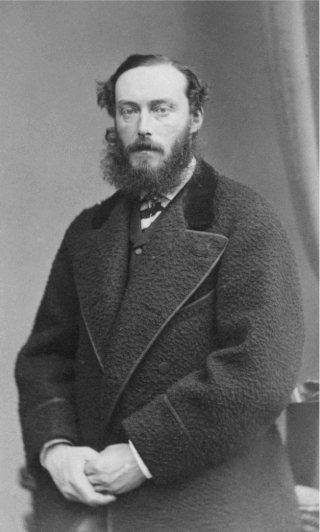
James Lamont was a Scottish explorer and author, particularly known for his voyages in the Arctic in 1858–59 and 1869–71, which were the topic of his two books, Seasons with the Sea-Horse (1861) and Yachting in the Arctic Seas (1876). He was a fellow of the Geological Society of London and the Royal Geographical Society. He served as the Liberal Member of Parliament for Buteshire (1865–68), and was created a baronet in 1910.
Jamieson Ridge is a narrow ridge 1 nautical mile (2 km) long, rising to about 1,200 metres (4,000 ft) at the southwestern end of the Herbert Mountains, in the Shackleton Range, Antarctica. It was photographed from the air by the U.S. Navy, 1967, and surveyed by the British Antarctic Survey, 1968–71. In association with the names of glacial geologists grouped in this area, it was named by the UK Antarctic Place-Names Committee in 1971 after Thomas F. Jamieson, a Scottish geologist whose work on the ice-worn rocks of Scotland developed the true origin of glacial striae in 1862, and who in 1865 originated the theory of isostasy.

Sydney Barber Josiah Skertchly was an English and later Australian botanist and geologist. He described and mapped the geology of East Anglia and The Fens, travelled the world exploring geology and other aspects of science, and became influential in scientific societies in Queensland.
John Nevay was a Scottish Covenanter. He was the nephew of Andrew Cant, minister of Aberdeen. He graduated with an M.A. from King's College, Aberdeen, in 1626. He worked as tutor to George, Master of Ramsay. He was licensed by the Presbytery of Dalkeith 14 October 1630 on the recommendation of that of Alford, but left its bounds a fortnight after. He was admitted about 1637 and appointed in 1647 a member of committee to revise the Psalter. He was present at Mauchline Moor in opposition to the royal army in June 1648. He was subsequently pardoned by Parliament on 16 January 1649. Nevay was appointed a commissioner by Parliament for visiting the University of Aberdeen 31 July 1649. He was active in raising the western army in 1650, and in 1651 a prominent supporter of the Protesters. In 1654 he was named by the Council of England on a committee for authorising admissions to the ministry in the province of Glasgow and Ayr. On 23 December 1662 he was banished by the Privy Council from His Majesty's dominions and went to Holland, where he died in 1672, aged about 66.
Extracts from Letters to Henslow, taken from ten letters Charles Darwin wrote to John Stevens Henslow from South America during the second survey expedition of HMS Beagle, were read to the Cambridge Philosophical Society on 16 November 1835 by Henslow and Adam Sedgwick, followed on 18 November by geological notes from the letters which Sedgwick read to the Geological Society of London. On 1 December 1835 they were printed as a pamphlet for private distribution.
References
- 1 2 Hancock, Paul L.; Skinner, Brian J.; Dineley, David L. (2000). The Oxford Companion to The Earth . Oxford University Press. ISBN 0-19-854039-6.
- ↑ "Thomas Francis Jamieson biography". Gazetteer for Scotland . Retrieved 12 September 2008.
- ↑ "Thomas Francis Jamieson, 1829–1913". Darwin Correspondence Project. Archived from the original on 22 August 2007. Retrieved 12 September 2008.